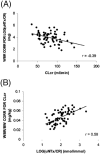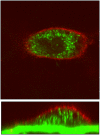Pharmacology of bisphosphonates
- PMID: 30650219
- PMCID: PMC6533426
- DOI: 10.1111/bcp.13867
Pharmacology of bisphosphonates
Abstract
The biological effects of the bisphosphonates (BPs) as inhibitors of calcification and bone resorption were first described in the late 1960s. In the 50 years that have elapsed since then, the BPs have become the leading drugs for the treatment of skeletal disorders characterized by increased bone resorption, including Paget's disease of bone, bone metastases, multiple myeloma, osteoporosis and several childhood inherited disorders. The discovery and development of the BPs as a major class of drugs for the treatment of bone diseases is a paradigm for the successful journey from "bench to bedside and back again". Several of the leading BPs achieved "blockbuster" status as branded drugs. However, these BPs have now come to the end of their patent life, making them highly affordable. The opportunity for new clinical applications for BPs also exists in other areas of medicine such as ageing, cardiovascular disease and radiation protection. Their use as inexpensive generic medicines is therefore likely to continue for many years to come. Fifty years of research into the pharmacology of bisphosphonates have led to a fairly good understanding about how these drugs work and how they can be used safely in patients with metabolic bone diseases. However, while we seemingly know much about these drugs, a number of key aspects related to BP distribution and action remain incompletely understood. This review summarizes the existing knowledge of the (pre)clinical and translational pharmacology of BPs, and highlights areas in which understanding is lacking.
Keywords: Bisphosphonates; bone; osteoporosis; pharmacology.
© 2019 The British Pharmacological Society.
Figures





References
-
- Widler L, Jahnke W, Green JR. The chemistry of bisphosphonates: From antiscaling agents to clinical therapeutics. Anticancer Agents Med Chem. 2012;12(2):95‐101. - PubMed
-
- Fleisch H, Russell RG, Francis MD. Diphosphonates inhibit hydroxyapatite dissolution in vitro and bone resorption in tissue culture and in vivo . Science. 1969;165(3899):1262‐1264. - PubMed
-
- Francis MD, Russell RG, Fleisch H. Diphosphonates inhibit formation of calcium phosphate crystals in vitro and pathological calcification in vivo . Science. 1969;165(3899):1264‐1266. - PubMed
-
- Fleisch H, Russell RG, Simpson B, Muhlbauer RC. Prevention by a diphosphonate of immobilization "osteoporosis" in rats. Nature. 1969;223(5202):211‐212. - PubMed
Publication types
MeSH terms
Substances
LinkOut - more resources
Full Text Sources

